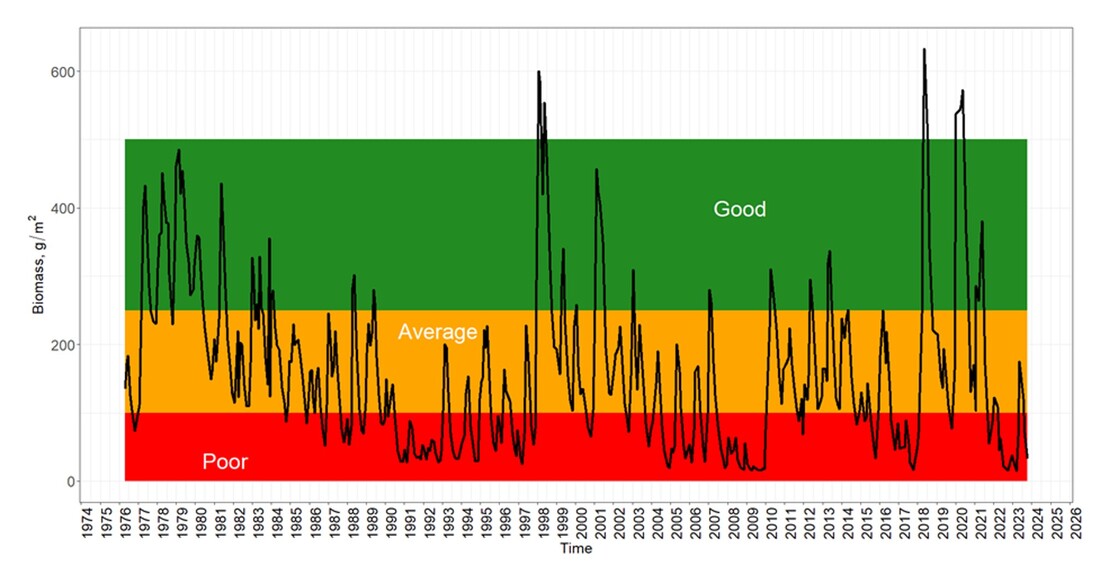Introduction
The short rains, perhaps heralding a wet El Niño, started in the Amboseli area in early November. By the time David Western and David Maitumo did an aerial count on 15th November the grass had greened up everywhere except Osilalei directly to the north.
Lake Amboseli had begun to flood, and much of the Amboseli Basin was fully saturated with rainwater. The wildebeest and zebra herds had moved out on migration and elephant numbers dropped from 430 in October to 250. On the other hand, cattle numbers remained high, with 2,000 in the park despite the good rains. Several herds had moved into prime wildlife viewing areas in the center of the park.
Conditions in the Amboseli ecosystem
The poor short rains of April and May did break the drought cycle which began in early 2022 sufficient to see a recovery of livestock and wildlife. Persistent heavy grazing soon pushed pasture condition back into the red zone (Figure 1). The current good rains starting in November and projected to continue into 2024 will provide sufficient pasture for wildlife and livestock herds to begin to recover from the drought.
| amboseli_outlook_report_november_2023_20_11.pdf |

 RSS Feed
RSS Feed
